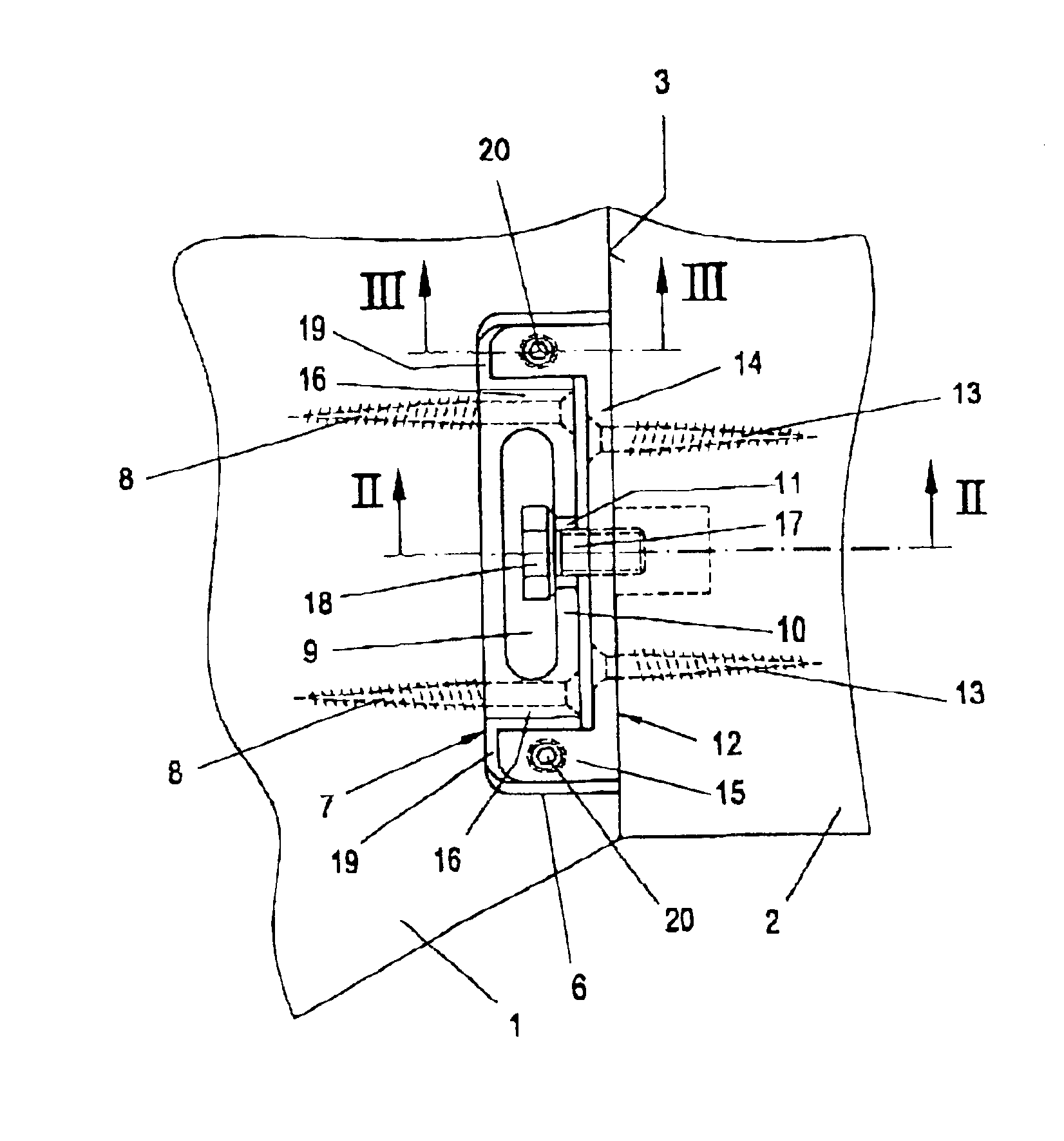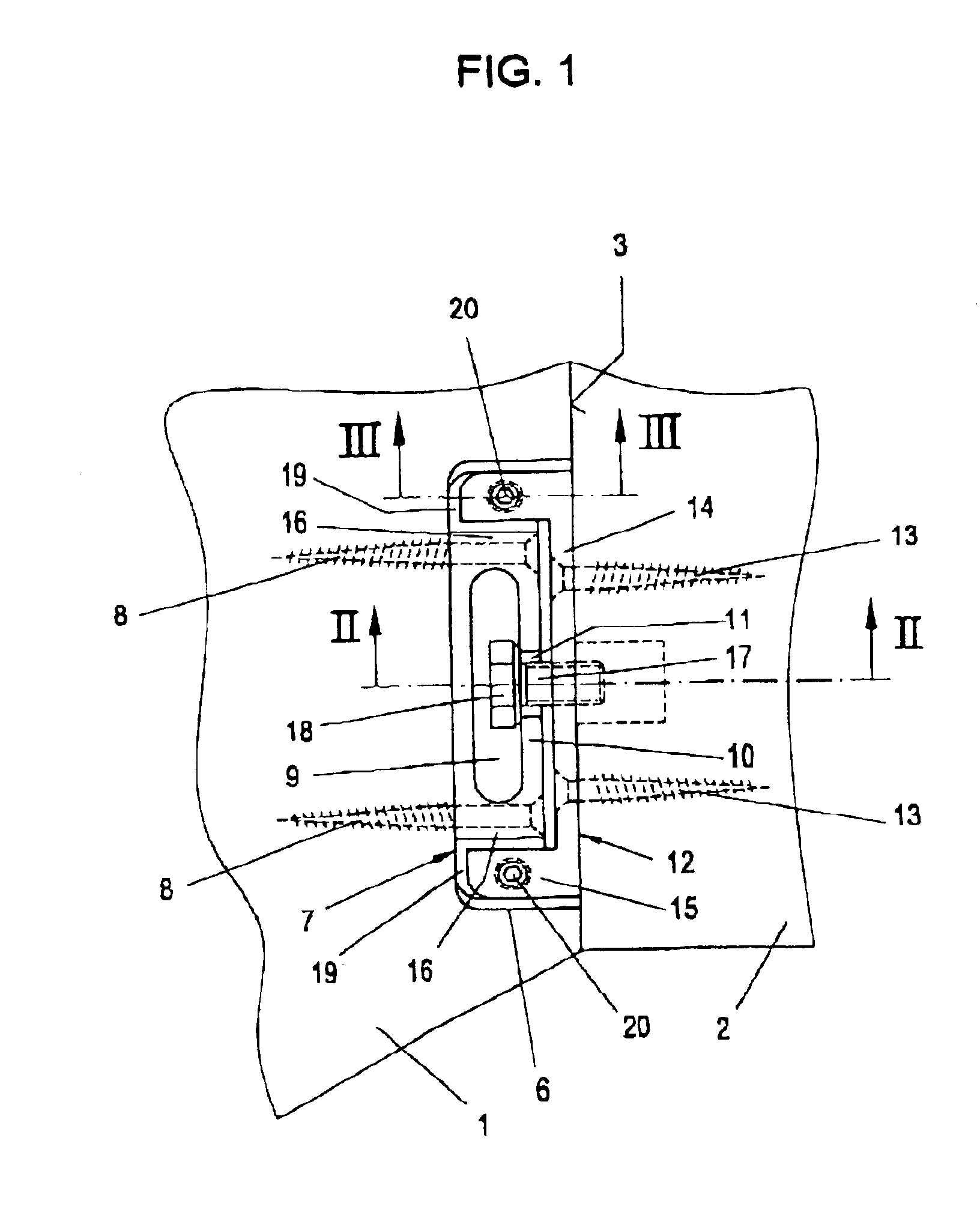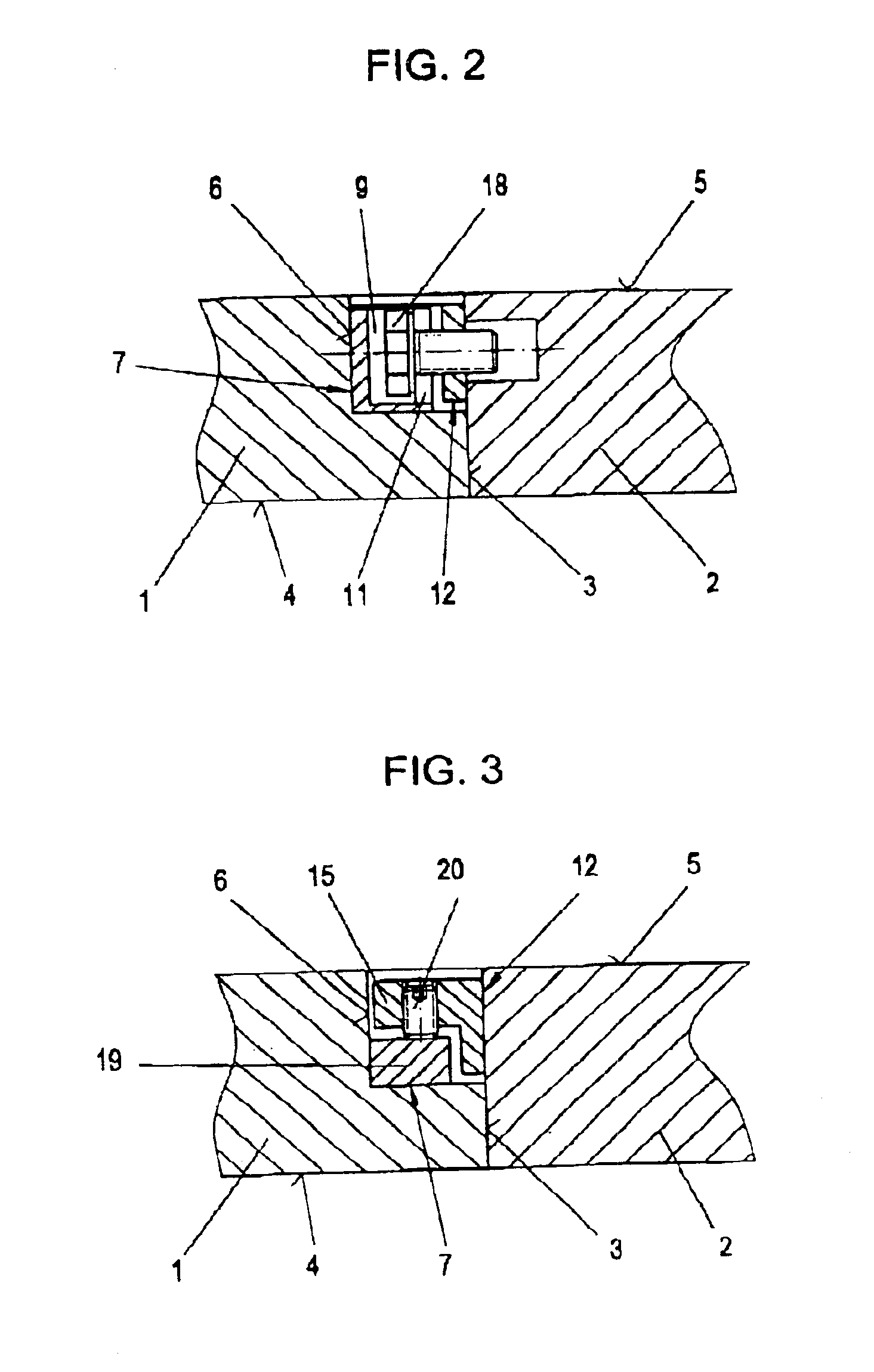Device for connecting two sheets, in particular work sheets
- Summary
- Abstract
- Description
- Claims
- Application Information
AI Technical Summary
Benefits of technology
Problems solved by technology
Method used
Image
Examples
Embodiment Construction
[0010]The arrangement according to the invention refers to the connection of two sheets 1, 2 whose faces 3 contact 35 each other and whose top surfaces 4 lie in one plane to form panels, such as panels for counter tops.
[0011]The underside 5 of sheet 1 in the area of face 3 is provided with a recess 6 which accommodates a first fitting part 7 that is fastened to sheet one with screws 8. This first fitting part 7 is provided with a recess 9 (open toward the bottom), whose limiting wall 10 faces sheet 2 and accommodates a slot 11 open toward the bottom.
[0012]The second fitting part 12 connected to sheet 2 consists of a plate 14 fastened to face 3 of plate 2 with screws 13; said plate 14 is provided with flanges 15 which surround the side walls 16 (which extend across limit wall 10 of the first fitting part 7) with clearance. Screwed into a threaded section of plate 14 is a locking screw which can be inserted into slot 11, which is open toward the bottom, and whose head is designed as a...
PUM
 Login to View More
Login to View More Abstract
Description
Claims
Application Information
 Login to View More
Login to View More - R&D
- Intellectual Property
- Life Sciences
- Materials
- Tech Scout
- Unparalleled Data Quality
- Higher Quality Content
- 60% Fewer Hallucinations
Browse by: Latest US Patents, China's latest patents, Technical Efficacy Thesaurus, Application Domain, Technology Topic, Popular Technical Reports.
© 2025 PatSnap. All rights reserved.Legal|Privacy policy|Modern Slavery Act Transparency Statement|Sitemap|About US| Contact US: help@patsnap.com



